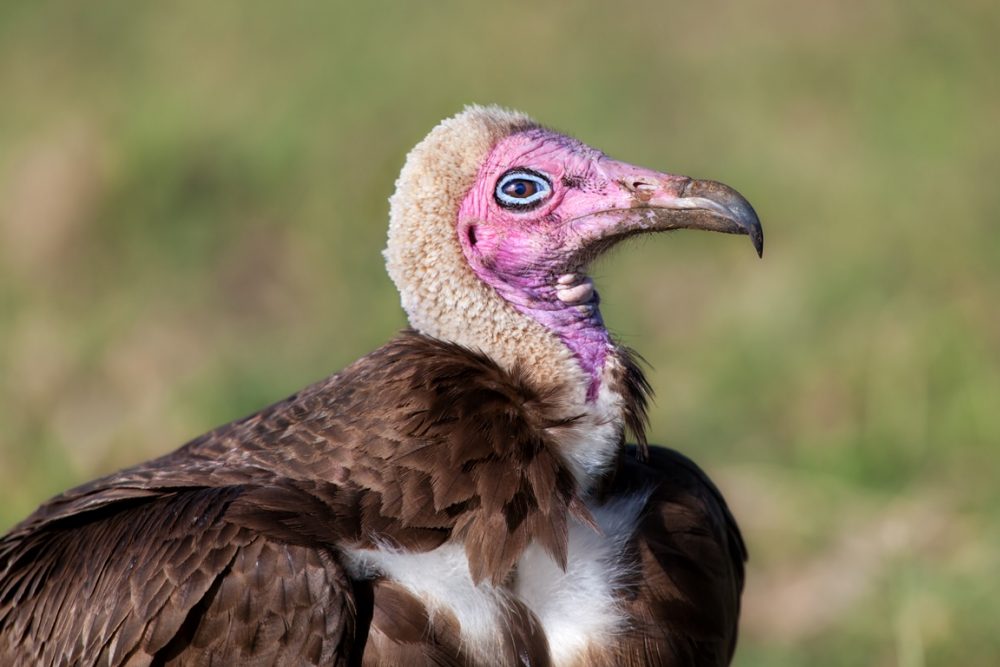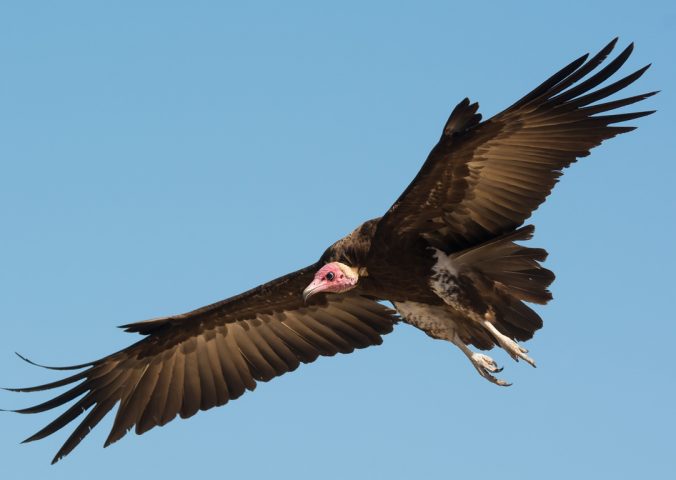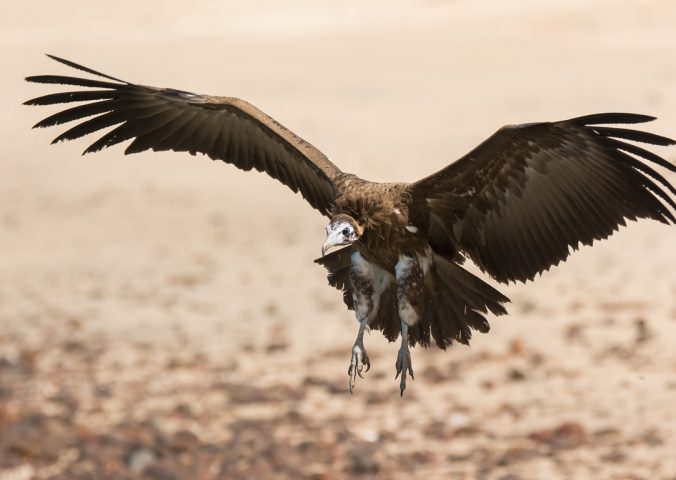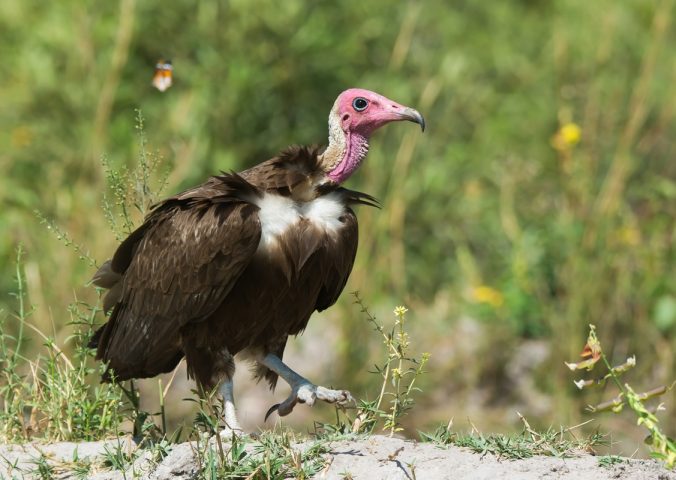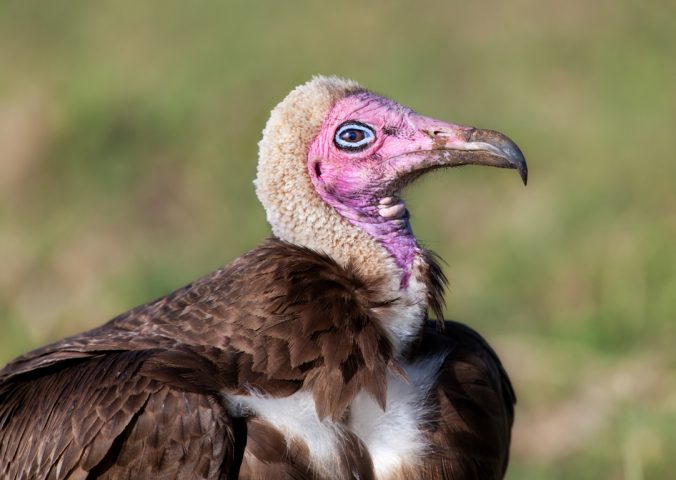About
The Hooded Vulture is a scruffy looking Old World vulture.
It is the sole member of the genus Necrosyrtes, making this a monotypic genus within the family Accipitridae. This family includes eagles, kites, buzzards and hawks and they diverged from all other bird species 49.6 million years ago, during the Paleogene period. These birds practice monogamy, where males and females remain with one mate during a mating season, and will co-rear their young together as a team. Like other vultures, this species is a scavenger, feeding mostly from carcasses of dead animals and waste which it finds by soaring over savannah and around human habitation, including waste tips and abattoirs. They sometimes referred to as the “garbage collector” by locals. The major threats to this species include non-target poisoning, capture for traditional medicine and bushmeat – in Nigeria, a survey of medicinal traders found that Hooded Vulture was the most commonly traded species of culture, with 90% of all vulture parts traded belonging to the species, with an estimated 9,000 individuals traded over a six year period in West Africa. Declines have also been attributed to land conversion through development and improvements to abattoir hygiene and rubbish disposal. This species is widespread and found in a large number of protected areas. It is currently being surveyed in parts of its range, with larger scale monitoring planned. The Hawk Conservancy along with the Endangered Wildlife Trust are currently working on providing training and equipment for anti-poisoning teams so that field staff will have the skills and equipment to respond to a neutralise poisoned carcasses.
- Order: Accipitriformes
- Family: Accipitridae
- Population: 197,000
- Trend: decreasing
- Size: 60-79cm
EDGE Score
Distribution
This species is widespread in sub-Saharan Africa.
Habitat and Ecology
This species is often associated with human settlements north of the Equator, but is also found in open grassland, forest edge, wooded savanna, and desert and along coasts. They tend to occur at higher densities where populations of larger Gyps vultures are low or non-existent. They live up to 4,000 metres, but are most numerous below 1,800 metres. They feed mainly on carrion, but also insects. They are an arboreal nester and they lay a clutch of one egg.
